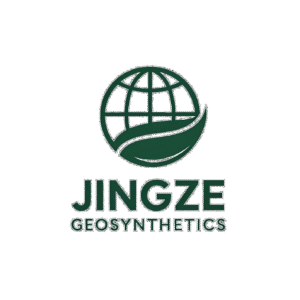Introduction
Geosynthetic Clay Liners (GCLs) are essential materials in environmental protection, particularly in the containment and control of hazardous materials in landfills and mining applications. This article explores the features, applications, benefits, and installation guidelines of GCLs in environmental engineering.
What Are Geosynthetic Clay Liners?
Geosynthetic Clay Liners are composite materials composed of a layer of bentonite clay bonded between two geotextile fabrics. This combination offers a cost-effective, durable solution for creating impermeable barriers in landfill linings, containment systems, and other environmental applications.
🔍 Key Features of Geosynthetic Clay Liners
- Low Permeability: GCLs provide a highly effective barrier to liquid, preventing contamination of groundwater and soil.
- Environmental Resistance: Resistant to UV radiation, chemicals, and extreme environmental conditions, making them ideal for long-term use.
- Lightweight and Easy to Transport: Unlike traditional clay liners, GCLs are lighter and easier to handle during installation.
- Sustainability: GCLs can be recycled and reused, contributing to sustainable construction practices.
🏗️ Applications of Geosynthetic Clay Liners
🌿 Landfills and Waste Containment
GCLs are commonly used in landfill liners and caps to prevent the leakage of leachate into surrounding soil and groundwater. Their low permeability makes them an essential component in waste containment systems.
🏭 Mining and Hazardous Waste Containment
In mining operations, GCLs provide an effective barrier against hazardous chemicals and materials. They are used to line tailings ponds, heap leach pads, and other areas that require containment of toxic substances.
🌊 Water Containment Systems
GCLs are used in the construction of water containment systems such as ponds, reservoirs, and dams. They provide a reliable barrier against water leakage, ensuring the integrity of the system.
🌱 Agricultural Applications
GCLs are also employed in agricultural applications such as irrigation and drainage systems, where they prevent the contamination of water sources with harmful chemicals or runoff.
🧩 Advantages of Geosynthetic Clay Liners
- Enhanced Leak Protection: Provides a secure and long-lasting barrier against the leakage of harmful liquids.
- Durability: Resistant to environmental and chemical degradation, ensuring long-term performance.
- Cost-Effective: GCLs offer a lower-cost alternative to traditional clay liners and are easier to install.
- Environmentally Friendly: Can be recycled and contribute to eco-friendly construction practices.
🧪 Installation Guidelines for GCLs
Step 1: Surface Preparation
Ensure the surface is smooth and free of debris, sharp objects, or any materials that could damage the GCL.
Step 2: Liner Placement
Lay the GCL over the prepared surface, ensuring proper alignment. Overlap edges by at least 30 cm (12 inches) to maintain the integrity of the liner.
Step 3: Anchoring and Securing
Secure the GCL using appropriate anchoring methods such as trenching or securing with soil or gravel.
Step 4: Covering the Liner
Once the GCL is properly placed and anchored, cover it with soil, gravel, or other appropriate materials to protect it from environmental exposure.
🧾 Conclusion
Geosynthetic Clay Liners are vital components in environmental protection, offering a reliable, durable, and cost-effective solution for containment applications. With their exceptional permeability characteristics and resistance to degradation, GCLs provide long-lasting protection for landfills, water containment systems, and hazardous waste containment.

